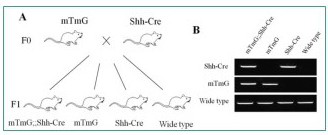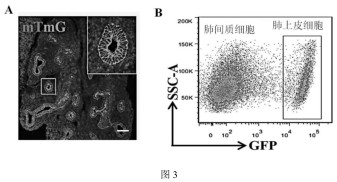Economical, simple and convenient method for inducing lung organs and establishment of experimental model
An organoid and simple technology, applied in the field of in vitro induction of mouse lung organoids, can solve the problems of high cost of culture and high technical requirements of lung organoids, and achieve the effect of reducing the cost of culture
- Summary
- Abstract
- Description
- Claims
- Application Information
AI Technical Summary
Problems solved by technology
Method used
Image
Examples
Embodiment 1
[0042] Example 1 Compound Combination
[0043] 1. Lung mesenchymal cell culture medium
[0044] Carry out the configuration of lung mesenchymal cell culture medium according to the ingredient table shown in Table 1
[0045] Reagent name final concentration DMEM 89% FBS 10% Streptomycin Mixture 1% Primocin TM
100 μg / mL
[0046] Specifically, in one embodiment of the present invention, the DMEM and the penicillin-streptomycin mixed solution are purchased from LifeTechnologies Company, the article numbers are 11330032 and 15140-163 respectively, FBS is purchased from Biowest Company, the article number is S1580-500, Primocin TM Purchased from Invivogen, Cat. No. ant-pm-1. Of course, those skilled in the art can also use reagents produced by other companies with the same efficacy to configure the expansion medium of the present application, which is not specifically limited in the present invention.
[0047] Preferably, the inventor ...
Embodiment 2
[0055] In the present invention, GFP-labeled lung epithelial cells are separated by flow cytometry, co-cultured with lung mesenchymal cells, and natural growth factors and cell components secreted by mesenchymal cells are used to promote lung epithelial cells to form lung organoids. Lung epithelial cell isolation and organoid formation procedures such as figure 1 As shown, specifically:
[0056] 1. Obtainment of transgenic mice (mTmG;;Shh-Cre mice) expressing GFP in lung epithelial cells.
[0057] 1.1 as figure 2 As shown in A, in the present invention, mTmG transgenic mice are used as female parents, Shh-Cre transgenic mice are used as male parents, and offspring (F1) mice are obtained by mating.
[0058] 1.2 as figure 2 As shown in B, the offspring mice were identified by PCR, and the mice with positive mTmG and Shh-Cre PCR amplifications were mTmG;;Shh-Cre genotype mice.
[0059] 1.3 The PCR identification primers of mTmG mice used in the present invention are:
[0...
PUM
| Property | Measurement | Unit |
|---|---|---|
| Diameter | aaaaa | aaaaa |
Abstract
Description
Claims
Application Information
 Login to View More
Login to View More - R&D
- Intellectual Property
- Life Sciences
- Materials
- Tech Scout
- Unparalleled Data Quality
- Higher Quality Content
- 60% Fewer Hallucinations
Browse by: Latest US Patents, China's latest patents, Technical Efficacy Thesaurus, Application Domain, Technology Topic, Popular Technical Reports.
© 2025 PatSnap. All rights reserved.Legal|Privacy policy|Modern Slavery Act Transparency Statement|Sitemap|About US| Contact US: help@patsnap.com



